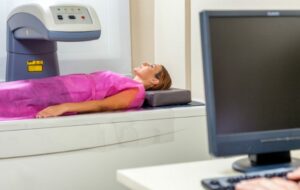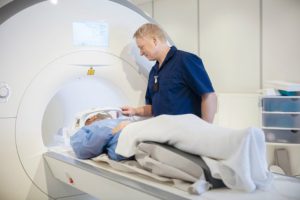Vision XRAY: Mammography FAQ
At Vision XRAY, one of our most common radiological services is the mammogram. Mammography is a special kind of X-ray technology that is used exclusively to examine the breasts.

Vision XRAY: Mammography FAQ

At Vision XRAY, one of our most common radiological services is the mammogram. Mammography is a special kind of X-ray technology that is used exclusively to examine the breasts.
Because this is a common scan, many of our patients have a lot of questions about what to expect. We at Vision XRAY believe that providing information to our patients is the best way to make them feel comfortable and prepared. Today we address some of our most frequently asked questions regarding mammography.
Who should get a mammogram?
From the age of 40, women should begin getting regular mammograms. The risk of developing breast cancer grows as women age. Younger women (30-40 years old) should have a mammogram and ultrasound if they have a symptom. Women with a family history of breast cancer may benefit from beginning regular mammograms earlier. You can discuss this with your doctor or radiologist.
Are mammograms reliable?
When women ask about the reliability of mammography, they are generally asking about its effectiveness in cancer detection. In combination with breast ultrasound, mammography has a rate of accurate cancer detection in more than 90% of cases. Mammography should be used in conjunction with ultrasound in women who have a symptom and those who have higher breast tissue density (usually women under 50 years).
How long does the mammogram take?
A mammogram is a fairly short scan. Your entire appointment should not last more than 30 minutes.
Is a mammogram painful?
Many patients feel anxious about their mammogram as they anticipate experiencing pain. The procedure is brief, and most would describe it as uncomfortable. During the mammogram, each breast is compressed individually for several seconds between two plates. This allows for the clearest possible images.
Is there a risk of radiation exposure?
A mammogram is a type of low dose x-ray, and thus uses ionising radiation to create images of the body. So, the short answer is yes, you will be exposed to radiation albeit a very low dose. Our team is dedicated to controlling and minimising all radiation exposure. Digital mammography uses the lowest possible doses that allow for effective imaging. Your safety and care is our highest priority. The benefit of an accurate diagnosis far outweighs the risk.
What type of equipment does Vision XRAY use?
We use digital mammography technology, which is more advanced and generates images which are easier to study at a lower radiation dose. Our ultrasound machines are high resolution, providing more accurate assessment. With all of our equipment, Vision XRAY is committed to using only the most advanced and well-reputed equipment, consistently maintained and updated.
What happens during the screening?
Please arrive a few minutes early for your appointment. You should refrain from wearing powders or lotions as these could interfere with the imaging. The radiographer will have you undress from the waist up, standing in front of the machine. One breast at a time will be placed between the two plates for scanning to provide a comprehensive picture. The breast tissue will then be slowly compressed to even it out and optimise the images. Two images are usually taken of each breast.
Vision XRAY offers a comprehensive breast imaging service at our Australian Breast Centre. Our team of experts offer clinical assessment, imaging and biopsy as required. If you have any queries or concern we would be happy to discuss them with you.
Read our articles and FAQs
We’re delighted to provide updates on the latest medical imaging technology and answer your most frequently asked questions about our services.









